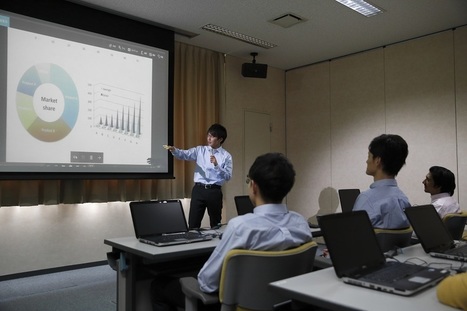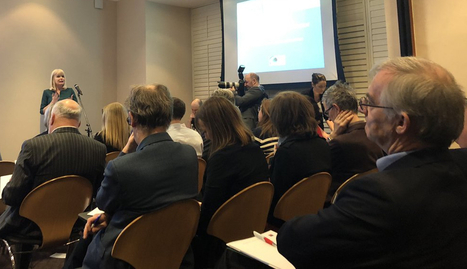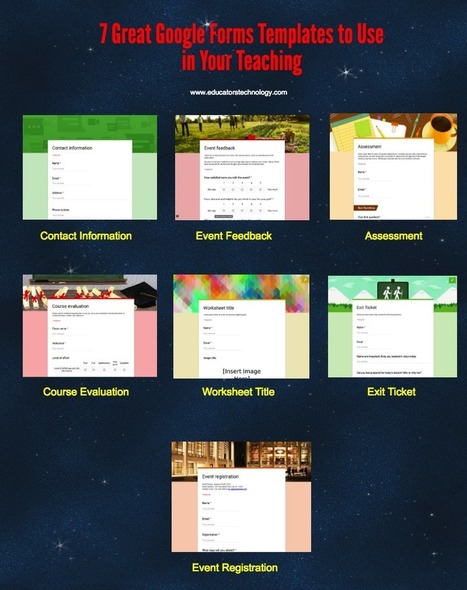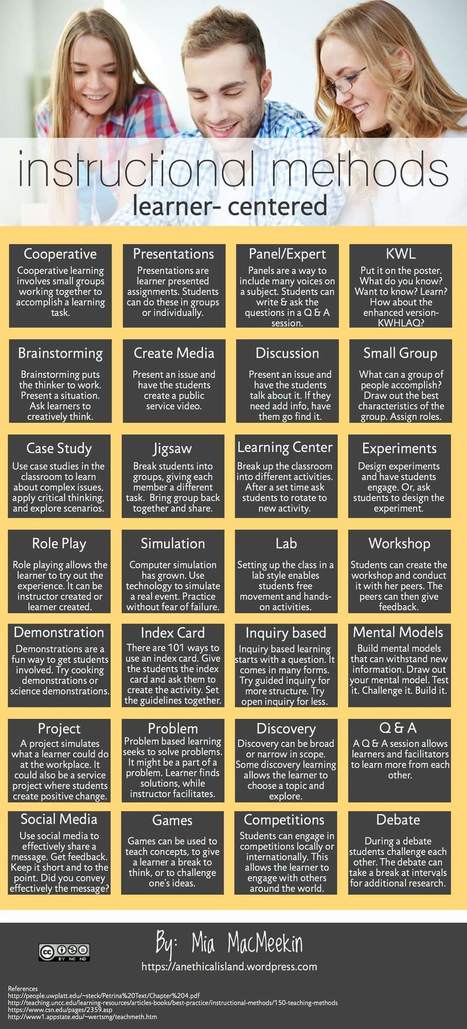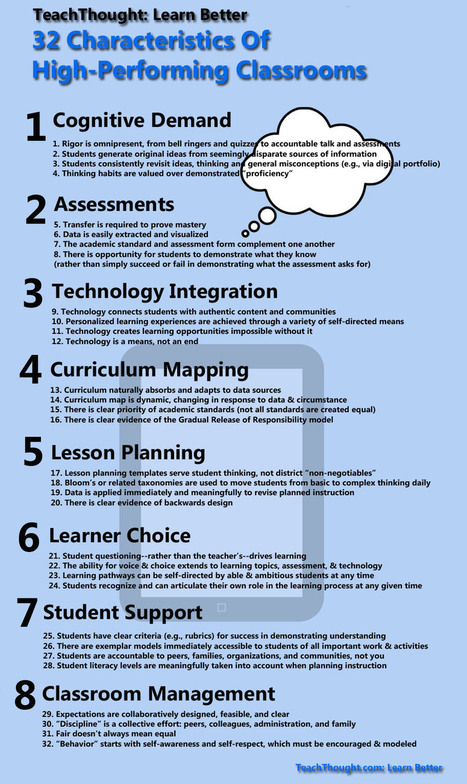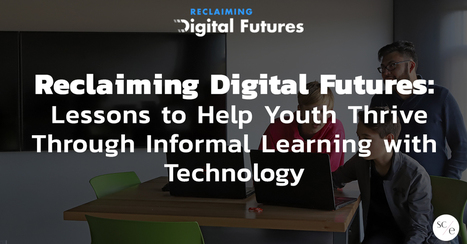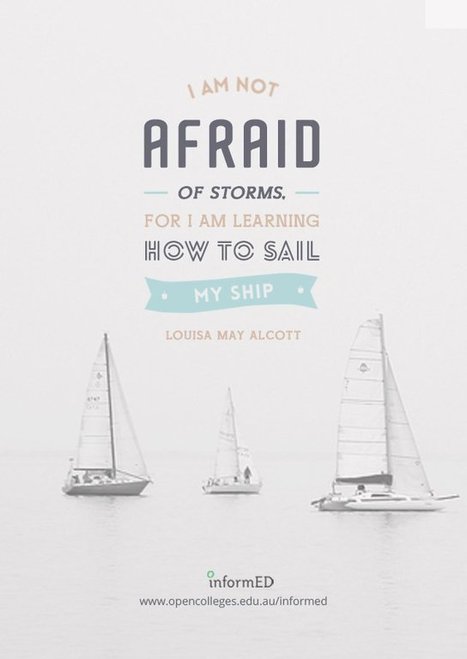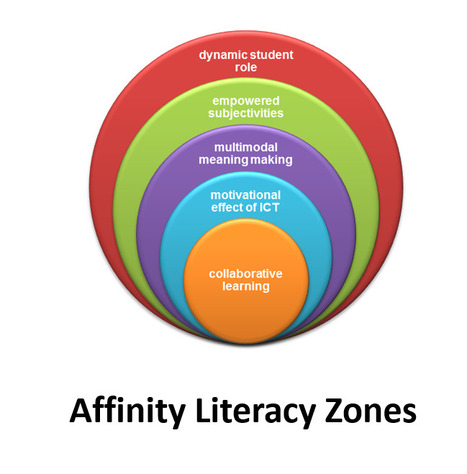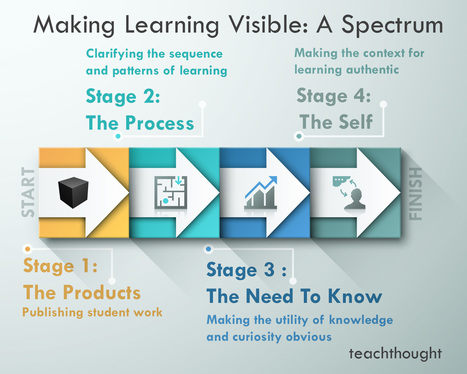 Your new post is loading...
 Your new post is loading...
A school’s role is complex and constantly developing. What began as means through which to teach a trade evolved into a forum through which to impart knowledge. Today’s classrooms go beyond these original objectives and are intended to “prepare all…Read more →
There have been many changes in the development of national and world education. The most observable phenomenon is now the internalization of society and the penetration of digital technologies into learning. Education has traditionally been seen as a pedagogic relationship between the teacher and the student. Pedagogy, the art of science and teaching the child, embodies a teacher-focused education where the teacher dominates the classrooms. This approach assumes the teacher being the repository of knowledge and taking full responsibility about what the learner needs to learn when it is to be learned, and indeed how it should be learned. This pedagogical slant develops the role of the student to be a dependent one and the relationship between the student and his/her peers as a competitive one. Pedagogical learning is purely based on the possession of skills and knowledge through transmittal techniques, such as lectures, demonstrations, textbook reading, audiovisual presentations and examinations. Students are motivated to learn due to external pressures such as competition for securing higher grades, fear of failure and at times due to fear of punishment. Learning is confined to a pre-planned curriculum for all students so that it can easily be monitored and evaluated. It addresses the issue of what is to be learned “The Content”, and not how it is to be learned “The Process”.[1]
Via Elizabeth E Charles
By Professor Grainne Conole. I recently attended a HEA Future-focus Forum on Digital Transformation and Empowering Technologies in Higher Education. Prior to the meeting a paper was circulated setting the scene for the meeting. This contextualized the topic by referencing various Irish and EU relevant documents, including the Irish Future Jobs Initiative, the Digital Agenda for Europe, the European Digital Education Action Plan, the European Higher Education Area in 2018, etc. The paper argued that digital transformation is pervasive and can be understood as the changes that digital technology causes or influences in all aspects of human life. In addition, Higher Education will change significantly over the coming years due to digital transformation. Critical questions include: how can higher education Institutions (HEI) provide leadership in ensuring an ethical and responsible use of technology and data? How do we empower people to build a data-first culture and future proof our digital infrastructure? What are the challenges and how do we prepare for them? What international best practice exists to inform a national approach to digital transformation in Higher Education?
Via Elizabeth E Charles
“Moodle Man!” came the cry from behind me. I cringed. I’d made the fatal mistake of walking through the campus helpdesk area during lunchtime on assignment hand-in day. I turned, clutching my meal deal, to see a student, and one of my regular customers, come barrelling towards me, laptop in hand. “How do I submit my assignment again?” she asked. “I really need a Jill Watson,” I said, abandoning my sandwich behind the desk. “Who’s Jill Watson?” came the reply. “Never mind, let’s have a look at your assignment”.
Via Elizabeth E Charles
Free resource of educational web tools, 21st century skills, tips and tutorials on how teachers and students integrate technology into education
Via Tom D'Amico (@TDOttawa)
Tomorrow's Learning Today: 7 Shifts To Create A Classroom Of The Future
I am working with several schools on transforming the school structures, culture and instruction from a traditional model to a more modern version. Each of the schools has their own take on the out...
Via Dean J. Fusto
Google's free learning management system, Google Classroom, is now in full release and is being made available today to all Apps for Education customers.
32 Characteristics Of High-Performing Classrooms Instructional design is the strategic creation of learning experiences through intentional planning, sequencing, and data-based revision of learning. This process includes both the ways content is accessed, and the learning needs and objectives (and how they are determined) themselves. This puts instructional strategies, literacy strategies, curriculum mapping, standards unpacking, assessment design, digital literacy, and a dozen other facets of education beneath its umbrella.
As academic standards shift, technology evolves, and student habits change, schools are being forced to consider new ways of framing curriculum and engaging students in the classroom, and project-based learning is among the most successful and powerful of these possibilities. As both a planning and a learning tool, project-based learning challenges teachers to make new decisions about how they plan student learning experiences, while simultaneously empowering students to take a more active role in the learning process. In this context of trying to make since of exactly what progressive learning was, in 2009 I sketched out a graphic that visualized 9 Characteristics of 21st Century Learning, and recently created a follow-up framework, The Inside-Out Learning Model.
|
In its Innovative Learning Environments project, the OECD has identified seven principles that should be integrated into any learning environment to ensure that it is truly effective and relevant to the needs of 21st-century learners. While each of these principles was already known, the novelty that the OECD emphasizes is that they all need to be present, since it is in their sum that their strength lies. As elearning is set to become an increasingly important part of education, here is how this learning modality can respect and even enhance these seven fundamental principles.
Via Elizabeth E Charles
Developed through a collaborative process between researchers and practitioners, this toolkit is a curated cross-section of resources that relay knowledge and best practices in achieving real success in youth-centered digital learning. The Reclaiming Digital Futures toolkit is a curated cross-section of resources that relay best practices in youth-centered digital learning.
Via Elizabeth E Charles
Part of a technology coach’s role these days is to convince teachers that their job description has changed. The industrial model of education is well past its expiration date, and the generation of students born today are going to graduate into a world that will look completely different than our own. In order to train 20th century teachers to reach the conceptual understandings required for 21st century education, school leaders and tech coaches need to focus on describing what this could be.
Via Elizabeth E Charles, Miloš Bajčetić
Here’s a scenario that will set your head spinning: In less time than it takes for a student to go through K-12 schooling, Uber created and eliminated an entire job market. The ride-hailing industry leader started in 2009, created thousands of jobs across the country, and is now introducing self-driving cars that will replace those jobs. In fact, a recent report from the Committee for Economic Development of Australia (CEDA) showed that 40 per cent of jobs are in danger of becoming obsolete. This phenomenon is called the Law of Accelerating Change, and it’s not going to slow down any time soon. The only thing we can do to prepare for such change is to learn how to adapt to, better yet anticipate, it.
Via Elizabeth E Charles
Author: Stephania Savva
The core of this chapter reports on the development, implementation and evaluation of a theory based framework named Affinity Multiliteracies Practice (AMP) with the intention to provide an example of a teaching and learning approach to schooling that acknowledges students’ multiple and diverse identities, experiences and capabilities while also equipping them to become the flexible and dynamic learners required in the 21st century.
Via Stephania Savva, Ph.D, THE OFFICIAL ANDREASCY, Andreas Christodoulou, Mark E. Deschaine, PhD
How To Make Learning Visible: A Spectrum
Connecting with people through sincere positive beliefs can influence the brain and open it up for learning possibilities.
Via Dean J. Fusto
Start the New School Year With More Fun, Engaging Techniques and Resources Than You’ll Probably be Able to use all Year! Are you looking for ways to integration technology in your lesson plans and courses that provide for an engaging experience for you and your students? Fans of instructional technology know that it can be fun and inviting, and engaged students are far more likely to be learning.
Self-regulated learning is like your own little secret. It stirs from within you, and is the voice in your head that asks you questions about your learning.
More formally, self-regulated learning is the conscious planning, monitoring, evaluation, and ultimately control of one’s learning in order to maximize it. It’s an ordered process that experts and seasoned learners like us practice automatically. It means being mindful, intentional, reflective, introspective, self-aware, self-controlled, and self-disciplined about learning, and it leads to becoming self-directed.
32 Characteristics Of High-Performing Classrooms Instructional design is the strategic creation of learning experiences through intentional planning, sequencing, and data-based revision of learning. This process includes both the ways content is accessed, and the learning needs and objectives (and how they are determined) themselves. This puts instructional strategies, literacy strategies, curriculum mapping, standards unpacking, assessment design, digital literacy, and a dozen other facets of education beneath its umbrella.
|
 Your new post is loading...
Your new post is loading...
 Your new post is loading...
Your new post is loading...













